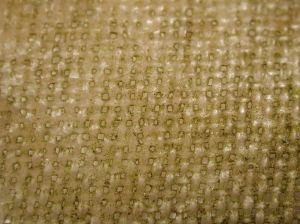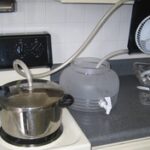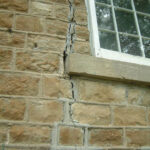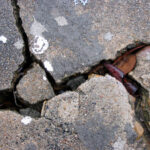Just like sheet metal on a car, fiberglass is prone to damage but unless you have a brand new car, getting a replacement part may not be that easy. Sometimes it may be cheaper to just repair the damaged part. Fenders, bumpers, hoods, and other fiberglass body parts will eventually chip, crack, or break when exposed to elements like heat, water, debris, and grime over time. If you have a damaged fiberglass body part it may be very inexpensive to replace it if it is small, but large pieces like fenders will be expensive to replace. It takes a certain amount of skill to repair fiberglass so if you do not have a particular eye for detail, or if you’re inexperienced you should hire a professional or someone to help you. Learn how to save time and cost on repairing fiberglass with these tips.
If you are a do it yourself-er, here’s a list of what you should purchase at your local automotive retailer:
-Marine Quality Fiberglass Mat
-Fiberglass Resin
-Sheet Metal
-Sandpaper (rough and smooth grit, wet sanding)
-Two 3” Natural Hair Paint Brushes
-Fiberglass Glaze
-Low Stick Masking Tape
-Fiberglass Primer
-Primer Sealer or Glaze
You should use the highest quality products you can afford to ensure the fresh fiberglass will last. Even if you decide to let a professional take over the job, you may be able to save some money by offering to supply materials at your expense and by offering to help with some of the labor. If you are inexperienced this is a great way to learn how to repair fiberglass and next time you can do it on your own. The fiberglass mat you purchase should be marine quality because it is built to weather the elements and will last much longer than any other glass mat. The strands of the mat should be white in color and the material should be clean.
Before you can patch up broken pieces and fix cracks you will have to do some sanding. Wherever there is an area of damage sand through the paint and top layers of fiberglass until a clean white appears. This ensures the new fiberglass attaches to strands that are not damaged or dirty. If you have a large hole or severe crack in your fiberglass body panels take them off the car and repair from the inside out. This is where the sheet metal comes in handy. Large areas that are missing will need to be reshaped and this is accomplished by placing sheet metal over the surface of holes. After cutting enough sheet metal to cover your holes screw it into the fiberglass covering the holes. Grind down the heads of the screws and edges of the sheet metal.
Before starting any fiberglass work, wear a filtered breathing mask, and then mix your resin glaze according the the instructions on the label. Too much hardener will make the glaze crystallize and will be extremely difficult to work with. Make sure you have a good mix before starting. Tear or cut your glass mat to size and soak in resin before applying to the car. It may take 3-5 layers of mat to build up the thickness desired. Let each layer dry completely before applying the next. After sticking the mat to the car or body part smooth it out with your brush and resin. Do this inside and out on large areas of damage to ensure a tight bond between the new fiberglass and old. Let the fiberglass dry overnight for best results and begin sanding the next day. Begin with a rough grit paper, 200 or so and sand down the surface of the repairs until smooth and even. Follow with a fine grit and feather the edges of the new fiberglass in towards the middle of the repair. If your repairs are not as thick as you desire repeat the fiberglass, resin, and sanding process until your goal is reached.
Once the desired look is achieved seal the fresh glass with fiberglass glaze. Once again allow all parts and panels to fully harden before moving on to the next step. When the parts are dry tape off the repair areas that need to be repainted and apply Fiberglass primer. You may want to use 2-3 coats because you will be sanding it for maximum smoothness. When the fiberglass primer is dry sand with a fine grit wet sand paper to smooth out the edges and any unnoticed raised areas. Wash off any residue with clean water and allow to dry. Finish by spraying a primer sealer or glaze which is the final step before you can apply paint.
In the long run, on most large fiberglass body panels like fenders and hoods you are likely to save money on repairs by doing it yourself. Repairing fiberglass doesn’t have to be hard just follow the instructions on the label of your products to ensure the project goes smoothly. If you don’t have a brother or friend that works in a body shop and can help you along, you should consider hiring a professional if you don’t know what you are doing. As always, when using chemicals that pose possible dangerous side effects use proper protection like eye wear, gloves, and a filtered breathing mask. Do not breathe in the dust from fiberglass or allow the fiberglass or primer chemicals to get on your skin. Now that the repairs are fixed you will want to get the car painted as soon as possible. Not only do gray spots all over the car make it look like a beater, but primer is not meant to last forever because you’re supposed to cover it with paint. Small areas you may be able to paint right at home in your garage but for large areas you may want to send the car to a professional.





